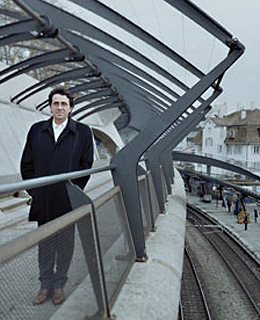
Santiago Calatrava's buildings seem alive. His planetarium in Valencia, Spain, resembles a burrowing hedgehog, while his Lisbon, Portugal, train station brings to mind a grove of trees. Not since the visionary designer Antonio Gaudi has anyone so seamlessly combined architecture, sculpture and engineering to create works that appear to sprout from nature. In the process, Calatrava has fashioned a breathtaking collection of bridges, stations and cultural centers that are some of the most romantic yet muscular buildings of a generation.
Calatrava developed his passion for movement and form growing up in Valencia, where he sketched the pigeons his parents raised. He earned degrees in engineering and architecture and has spent more than two decades perfecting an approachable style noted for biomorphic frames and expanses of glass that conjure up the exoskeletons of ancient behemoths and the windows of Gothic cathedrals. "People recognize the natural sense of harmony and peace and can then see themselves reflected in the architecture," he says.
All of Calatrava's structures appear as if they are about to move. Many do. The roof of his Milwaukee Art Museum flaps up and down like a gull's wings. His Nations Wall, a kinetic sculpture at the Athens Olympics, undulates like soccer fans performing a wave. And even buildings that don't move — such as the planned World Trade Center transportation hub, which looks like a crystalline dove resting on ground zero — seem poised to soar. Calatrava thus accomplishes what only great architects can: he creates transcendent spaces that uplift the human spirit.
From the Archive
Structures That Take Flight: TIME profiles Santiago Calatrava